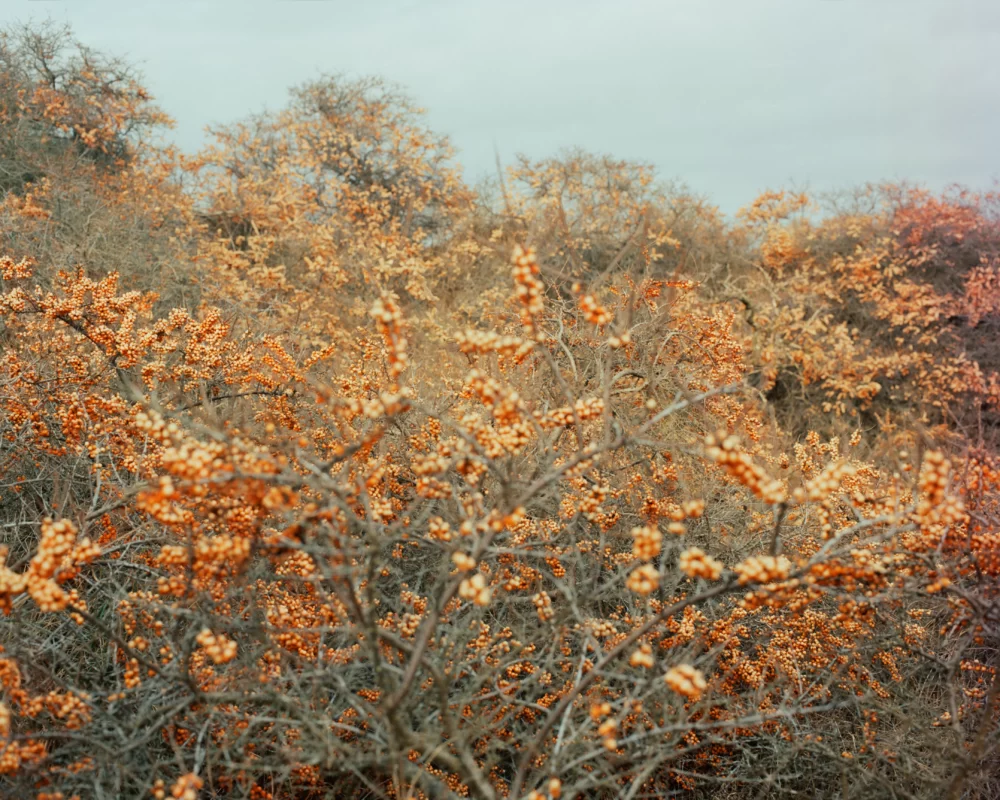Health Benefits
How to Grow Sea Buckthorn: Planting, Growing, Care
GROWING SEA BUCKTHORN
Sea buckthorn is a frost-resistant and light-requiring crop that does not require high outdoor conditions. Their canopy can withstand frosts down to -40 to -22°F (-40 to -30°C), and their root system can withstand frosts down to -13°F (-25°C).
If a deep snow cover creates positive temperature conditions in the soil (at an outside temperature of 32°F (0°C)), the roots of the sea buckthorn will begin to thaw. The plant becomes diseased and may die. Therefore, thawing is not uncommon in snow-covered areas of mid-latitudes, where the snow layer is reduced by shoveling snow from the trunk. This measure evens out the temperature and prevents plants from melting.
Site selection
The root system of the sea buckthorn is shallow and extends horizontally beyond the tree canopy. The crop does not like proximity to other crops and frequent cultivation. So choose a site with enough space and light around it. sea buckthorn’s unpopular predecessors: apricots, cherries, plums, pomegranates, apples, pears, strawberries, raspberries).
Planting material is best purchased in a nursery from 2-3-year-old seedlings with good root systems. sea buckthorn needs watering in dry years. It should be planted where the water table is above 40-80inch (1-2m) as it does not tolerate standing water.
Preparing the soil
The best soil for sea buckthorn is fertile, permeable, and breathable soil with a neutral response. If the soil is heavy, prepare large planting holes before planting and fill them with specially prepared soil.
Mix the top layer of the excavated soil 1:1 or 1:2 with humus or mulch and add sand. Apply 50-60 g of calcium superphosphate and 40-50 g of potash per planting hole. Nitroglycerin may be applied at a rate of 60-80 g per planting hole. The fertilizer should be well mixed with the soil. The amount and proportion of fertilizer may vary depending on the type of soil on site.
Quality of seedlings and planting rules
For a family, 2-3-4 female plants and 1 male plant (pollinator) are sufficient. You do not need to buy male plants if there are male plants in the adjacent plots. When choosing seedlings for planting, you should pay attention to the following points.The sapling should have 2-4 skeletal roots of 6-8inch (15-20 cm) with a shallowly cleft root system.A trunk up to 15-20inch (40-50cm) tall with several side shoots.
Bark that is flexible, smooth, and not peeling; discolored bark indicates that the seedling has been frosted in the spring; buying such a seedling is risky.
A few hours before planting, place the seedlings in a container with water and add a rooting agent. You can soak the roots of the seedlings in clay putty before planting.
Planting holes should be spaced 60-80inch (1.5-2m) apart. Plant seedlings in the spring to allow them to acclimate to growing conditions and develop a good root system. Planting holes are 20x20x23inch (50x50x60 cm) or larger if the soil needs a lot of humus, peat, sand, and other ingredients added to improve physical properties. Lime is applied in the fall to neutralize the acidified soil. The soil mixture is applied to the planting hole, forming a mound in the center. The roots of the seedlings are laid on top and covered with the remaining soil. Consolidate the soil by gradually pouring in 1.5-2 buckets of water and covering it with fine mulch (peat, humus, shavings). During planting, the root neck should be bent into the soil 2-2.8inch (5-7cm). This method will promote the formation of more root systems. To prevent the trunk from bending under wind pressure, tape or twine is used to tie it to the stand through a figure of eight.

CARE OF SEA BUCKTHORN
Prune sea buckthorn hygienically in the spring, before the buds bloom, and after harvest. Remove any dry, diseased, broken, or inward growing branches. Clean wounds, disinfect, and treat shrubs/trees with 1-2% Bordeaux mixture. During the flowering of sea buckthorn, the male plants should be shaken to disperse the pollen. If there are no male plants nearby, cut individual twigs from the male plants and shake them in the middle of the female plants.
With the arrival of stable warm weather, water the sea buckthorn if there is a light snowfall in winter and dry spring (May-early June). Otherwise, watering can be postponed until later. In summer, water repeatedly, but at a moderate rate, without standing water. The next day, loosen the soil slightly – no deeper than 2inch (5cm) and cover the soil. If the roots of the sea buckthorn are damaged during the tearing process, the shrub/tree will begin to form root buds or become sick from root/stem rot.
In the summer, water the sea buckthorn as needed, soaking the soil layer to 12-16inch (30-40 cm). A mulch layer of no more than 2inch (5cm) will keep the soil moist without unwanted loosening. The decaying mulch will be used as additional fertilizer when digging in the fall.
Fertilize sea buckthorn once or twice a year or every other year if the soil is heavy. Apply a bucket of manure solution (1:6) under the mulch in the spring and 0.5 buckets of humus/compost and 120-200 g and 100-120 g of phosphate and potash per shrub or tree in the fall, respectively.
You can change the fertilization pattern by applying a solution of poultry manure (1:8) or cow manure (1:6) in the spring, alternating with nitroglycerin or other complete fertilizers. In midsummer or after harvest, you can fertilize with irrigation or infusions of dry haylage. In spring, you can limit the application of ammonium nitrate (25-30 g per clump/tree) and organic solutions.
To form larger and fuller fruits, sea buckthorn is treated with a micronutrient, Efferton, humic acid solution at a rate of 1 tablespoon per bucket of water when the leaf margins or ovaries begin to grow.The soil should be kept free of weeds and undergrowth throughout the growing season.By fall, the harvest loaded on the branches of the sea buckthorn should be supported.
PRUNING AND SHAPING SEA BUCKTHORN
You can plant sea buckthorn as a shrub or a tree.
In shrub formation, planted sea buckthorn saplings are cut at the level of 6-8inch (15-20 cm). The following year, the most developed 3-5 shoots are selected from the rootstock, and the rest are removed completely. The bush is lifted to 8-9 buds. Then thinning and rejuvenation begin with the removal of 1 branch per year.
In the case of grafted seedlings, the following spring, 4-5 shoots are cut off from the annual shoots. In the summer, they produce growth, and the following spring 3-5 skeletal branches are selected from the lower buds of uniform growth. The rest are removed in a circular fashion. The skeletal branches left behind are pruned slightly. This early spring pruning of sea buckthorn will result in heavy annual growth of sea buckthorn that will be harvested in the year following the pruning. All thickened and bent shoots are removed.
Starting at 5-6 years of age, the sea buckthorn bush is rejuvenated, and a small crop is formed by cutting off one of the oldest branches at the base during fall pruning. During the summer inspection of the sea buckthorn (in the middle of the growing season), all branches that did not produce any growth during the year were cut off. Such branches end in fringed leaves that wither at the end of the growing season. But they take away some of the plant’s nutrients.
To form a sea buckthorn tree, prune 3 to 4 buds on the seedling. The following spring, prune the top 1-2inch (2.5-5 cm). The plucking helps the development of side shoots. In the third year, before budding and flowering or in late fall, clean the future trunk to a height of 15-20inch (40-50 cm) from the lateral buds. The wound is disinfected. Thereafter, 1-2 orders of skeletal branches are formed and grow each year. Wounds on sea buckthorn heal slowly, so it takes 2-4 years to form. No more than 2-3 branches are cut each year to become a ring. In the form of a tree, it is more advantageous to form male plants, while the female ones should remain in the form of a bush.

